Most historians have long doubted that the Vikings managed to reach America. But why have they put so little effort into trying to establish a permanent colony there? The answer seems child's play:they had already found a "New World" for themselves, full of free land, raw materials and free from the power of kings. It's just that it wasn't American Dream, but ... Icelandic D
Apart from the obvious differences between the realities of the 10th and 15th-16th centuries, the history of the conquest of Iceland is surprisingly reminiscent of the great race to the "New World" at the dawn of modernity. It's just that the main roles were played by Swedish and Norwegian travelers, not merchants from Italy, Spain or Portugal.
9th century:The age of great discoveries
Today it is difficult to say with certainty who first reached Iceland - an island distant from Scandinavia by almost 1000 kilometers. Several different Viking sailors have credited this achievement. 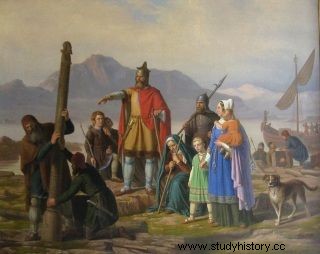
The Swede Gardar Svavarsson, who in 860 deviated from the course to the Hebrides (a good 700 kilometers!), Probably brushed the shores of Iceland the earliest. In this respect, he was not much different from Columbus - he did not swim where he wanted, but he quickly caught the opportunity.
Contrary to the 15th-century explorer of America, he did not manage to return to Iceland and establish any settlement there. In his impulses of modesty, he only managed to give this land a name - from his own name, of course:Gardarsholm. As you can probably guess, it fell into oblivion with him…
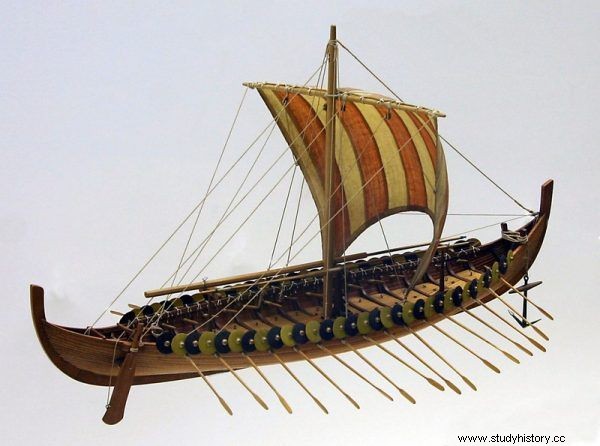
It was on this type of ship that the discoverers came to Iceland (reconstruction of Viking boats, photo Softeis, license CC BY-SA 2.5).
Only the Norwegian, Flocha Vilgerdarson, who set off to the new land a few years after Gardar (who would have thought that geographic novelties spread so quickly then) came to Iceland for a longer time. He was not particularly pleased with the expedition, but reportedly contributed to the world by inventing the name of the newly discovered island . In the chronicle from the turn of the 11th and 12th centuries it was written:
The fish climbed a high rise and saw, beyond the hills to the north, a fjord full of drifting ice. So they called this place Iceland [Frozen] and it has been called it ever since.
The travelers spent two winters in a distant land, and it was only on the second attempt that they managed to return to Norway. Among all the participants of the expedition, only one Thorolf was satisfied, who maintained that on the island they discovered, butter was dripping from every blade of grass . So it was called Buttery Thorolf.
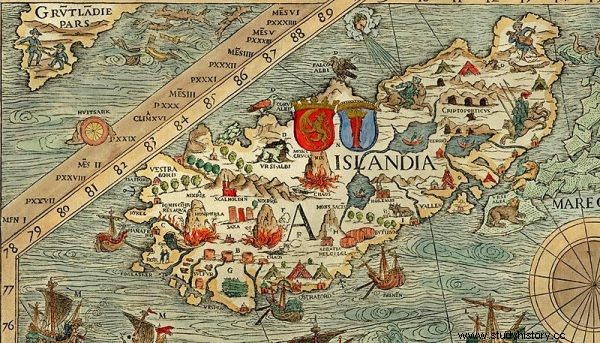
Iceland on the 'Carta marina' map by Olaus Magnus.
Probably only after hearing about this expedition, another adventurer, a Norwegian named Ingolf, sailed to Iceland, although he also recognized himself as the discoverer of the new island. Another contender for this title was the Norwegian Naddoddr, who was the first to reach the Faroe Islands.
In any case, this large group of sailors was none other than the aforementioned Ingolf who was the first to take the risk of establishing a permanent settlement in a distant country. This is how Reykjavik was born, and it was traditionally done in 874. The next thing went downhill…
Viking Eldorado
At the end of the 10th century, Norway was ruled by Harald Pięknowłosy, considered by many to be a despot. The authors of the book "Countries of the Vikings", recently published by PWN, explain that, according to medieval sagas, the first inhabitants of Iceland were:
regional chieftains and their families and minions fleeing the tyranny of the monarch. They created a society in the colony adhering to the traditional way of life, which was being destroyed in the homeland by a new, aggressive style of government.
Interestingly, the necessity to emigrate to the New World was explained in the same way 600 years later by the English Puritans - one of the first colonists in the United States who felt persecuted in their homeland.
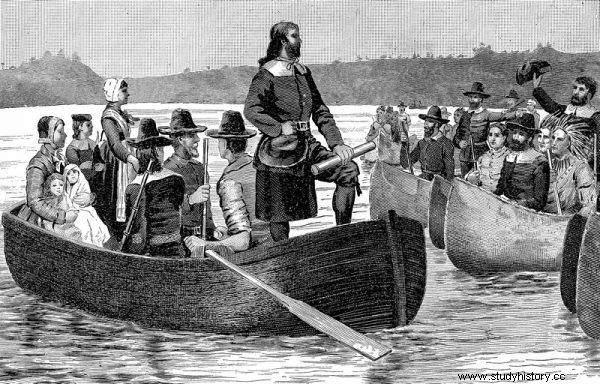
Puritans would be proud of the Icelandic colonists (Roger Williams' return from England, woodcut based on a painting by C.R. Grant, source:public domain).
Living under the foot of the king must indeed weigh on the Viking individualists. Iceland immediately became a real promised land for them. According to the chronicle by Arie Thorgilsson - the most accurate source on Iceland's early history - after 60 years all good land on the island was seized. And it was for the land that they would have to pay for in their home country that the Norwegians set off for Iceland.
Besides, rivers full of fish and great pastures awaited them there. There was a real advertising campaign which attracted more and more new and new settlers . One of the "promotional" sagas repeated the basic slogans of this campaign: animals graze there alone in winter, (...) there are fish in every river and lake (...) [a] people are not harassed by kings and villains.
Emigration took on such a scale that the Norwegian king finally introduced ... fees for leaving the country. Of course, it is difficult to speak of exact numbers, but it is estimated that the medieval Icelandic population eventually reached 40,000. A phenomenally high figure if we consider that even today only 300,000 people live on this island.
From anarchy to enslavement
Like North America during the first century of colonization, Iceland was originally a land of sheer chaos. The settlers fleeing from state power created a country ruled by anarchy according to the principle of "freedom, Tomek, in your home". In fact, the island was not one whole, but rather a collection of many independent small colonies.
In order to deal with the feuds in 930, the Althing was finally created - the annual gathering of the elite of the entire colony. This sovereign body in some respects resembled the United States Congress, several centuries later, which was also set up to reconcile the interests of the various colonies.
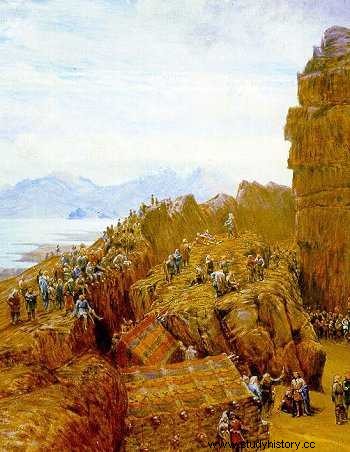
Session of the Althingu, the Icelandic equivalent of Congress, according to 19th-century painter W. G. Collingwood (source:public domain).
History textbooks today call the Althing (somewhat exaggerated) the longest-existing parliament in the world, and the Icelandic system itself is even the first democracy since the times of Greece. Even if such lofty words make any sense in relation to Iceland, the idyllic image of the colony rich in food, raw materials and land quickly fell apart.
First, the overpopulated island ran out of wood that had to be imported from Norway. Then all the fuel ran out, so in winter you had to heat the huts with ... horse dung. Eventually, the ash from volcanic eruptions ravaged the environment, limiting access to food.
All these problems were compounded by attempts at forcible Christianization of Iceland , undertaken in the last years of the 10th century by the Norwegian king Olaf Tryggvason. There was almost a civil war on the island, as well as officially sanctioned persecution of Christians.
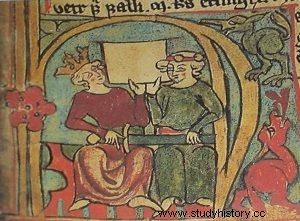
Håkon IV (left). He was a big motherfucker ...
In the end, the Althing adopted a new religion, but only after the ruthless king ... captured the members of the powerful Icelandic families who were visiting Norway and threatened to kill them all if the island did not convert .
Successive rulers of Norway were more and more tempted to look at the distant colony dependent on their help (and above all, the sale of wood). When the ruthless and cunning Håkon IV ascended the throne in 1217, it became evident that the days of independence and anarchy were drawing to a close.
The monarch attacked individual Icelandic families, ordered assassinations and incited nobles to war. It took just a few years for almost all of his influential opponents in Iceland to lose their lives. Finally, around 1262, at the end of Håkon's life, Iceland renounced its independence and recognized the sovereignty of the rulers of Norway. It regained independence only in 1918.
Source:
- Angelo Forte, Richard Oram, Frederik Pedersen, The Vikings. Conquests, power, culture. IX-XI century , Polish Scientific Publishers PWN, 2010.
